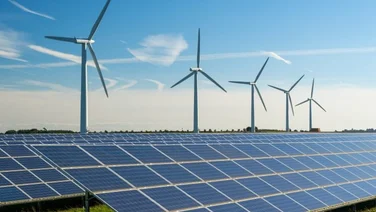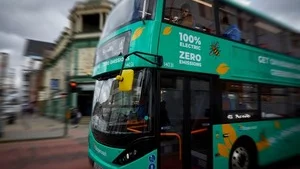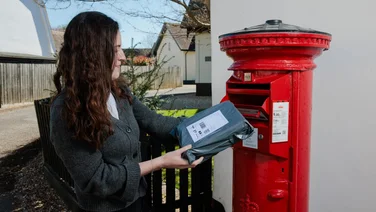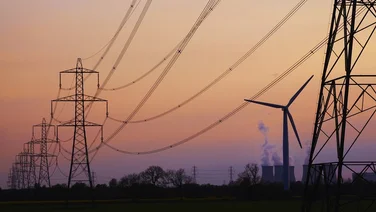- The Glastonbury Festival attracts more than 210,000 people a year
- Glastonbury invested in wind turbines, as early as 1994
- The festival has a break, on average, every five years
- Worthy Farm is a working farm outside the festival period
Founded in 1970, Glastonbury has swiftly become the UK’s biggest music festival, attracting an annual attendance rate of more than 210,000 people.
With such a high attendance rate, the subject of sustainability comes into question.
While the festival produces more than 2,000 tonnes of waste every year, it saves nearly 600 tonnes of greenhouse gas emissions.
Typically, a festival this large would have a negative impact on the environment, however, Glastonbury actually has a positive net impact. In this guide, we’ll explore just how the festival owners have achieved this.

Glastonbury’s sustainability initiatives
Over the years, Glastonbury has invested in initiatives to reduce its impact on the environment.
It has food compost initiatives, solar panels and biofuel recycling on site, runs a tree planting programme and takes measures to use less water.
The organisers have also decided not to hold the festival every five years, in a bid to help the ground recover from such levels of footfall.
Since its conception, the Glastonbury Festival has been held in the following years: 1970-1971, 1979, 1981-1990, 1992-1995,1997-2000, 2002- 2005, 2007-2011, 2013-2017, 2019, 2022-2024.
The site of the festival, Worthy Farm, also runs as a working farm outside of the festival period. As stated on its website: “Looking after the fields, hedges and livestock has always been our number one concern. And today, our big campaign remains ‘Love Worthy Farm – Leave No Trace’.
“We are trying to leave as little an imprint on the land here as we possibly can. For me, Worthy Farm is what life here is all about,” a note from Michael Eavis, co-owner said.
Waste and recycling
In order to reduce plastic consumption, in 2019, Glastonbury banned the sale of single-use plastic bottles, which – according to the site owners – has reduced the number of disposable plastic on site by millions.
As of 2023, Glastonbury only allows the sale of crisps in compostable packets, which was originally introduced in 2022, and disposable vapes are no longer permitted.
“Glastonbury Festival continues to work conscientiously to reduce non-recyclable waste and promote more sustainable alternatives. Only compostable or reusable plates, cutlery and drinking straws are allowed to be used as serveware and all cutlery used by market stalls must be made from FCS-assured wood,” the Glastonbury website said.
Glastonbury says its recycling centre recycles or reuses half of all waste at the festival. That places the event above the national household average of 44.6%, as recorded by the UK government in 2021.
In 2019, Glastonbury embraced the spirit of recycling even further by constructing a dance arena – the Gas Tower – entirely from plastic found littering public spaces in the south-west of England.
The Festival grounds has its own on-site recycling plant, which ensures staff can hand-separate its waste for single stream recycling, avoiding the need for landfill.
Energy and decarbonisation
Since 1984, Glastonbury’s Green Fields area has been run on solar, wind and pedal power. The site owners have since continued to monitor and record its energy use, while working to implement a fossil fuel-free standard across the festival.
And as of 2023, they achieved this goal. Glastonbury Festival was powered entirely by renewal fuels and renewable energy using lower impact, fossil-fuel free electricity or run on solar photovoltaic and battery hybrid systems.
To give you an idea of how they achieved this, the festival owners have installed the followed renewable energy sources:
- 250kWp solar PV array
- Anaerobic digester
- 125kVa biogas plant power
- Wind turbines (see more below)
All its generators are also run on sustainable, renewable palm oil-free HVO fuel, which is made from waste cooking oil, to help further reduce their CO2e emissions.
Encouraging public transport
Given the high attendance of Glastonbury, it’s safe to assume people will be driving, adding to the world’s CO2 emissions.
To negate this, the festival owners encourage festival-goers to use public transport, which are available throughout the festival. More than 40,000 people arrive by coach, train and bicycle each year.
To help encourage ticket-holders, the festival owners created their own carbon calculator tool you can use.
If you’re travelling from London via coach, for example, which is 256 miles, you’ll generate a total emissions of 11.2kg per person for a return journey.
For reference, if you made the same journey via standard car, your carbon footprint would increase to 68.7kg CO2e for a return journey.
Travelling by train will save you approximately 38 miles of travel from London to the festival, but you’ll produce slightly higher emissions than by coach, at 12.5kg CO2e.
The festival does prioritise the sale of its coach and festival ticket packages and partners with National Express who run services from 109 locations. Alternatively, if you cycle, the festival provides free, secure bike lock-ups and designated cyclists-only campsites, which include showers.
How Glastonbury Festival utilises wind power
Back in 2010, Worthy Farm installed 1,316 solar panels on the roof of its huge cattle shed. These generate 205,700kWh each year, according to Glastonbury’s website.
This saves around 100.9 tonnes of CO2 emissions annually, and even taking into account the 30,000kWh used during the festival, that still leaves 175,700kWh of renewable energy per year – a saving of 86.1 tonnes of CO2 emissions.
The festival also uses a lot of wind power, having installed a 150kW turbine in 1994. Most recently, in 2023, Glastonbury’s event owners installed a 28-metre wind turbine, right at the heart of the festival.
The installation took just six weeks and the turbine itself was erected in just one day. The turbine can spin at up to 120mph and produces up to 300kW per day, enough to power 300 fridges. This energy powers the festival’s food trucks, where there are more than 400 that attend.

Water and biodiversity
Given Glastonbury’s location in rural Somerset, the festival site includes reserves and protected areas, which the Eavis family intends to protect.
Since 2000, there have been over 10,000 native trees and hedges planted to support and enhance the local environment. To help further, Glastonbury has a team of litter pickers to hand-collect litter before the land is returned to farming use.
Looking at its water use, Bristol Water is its main supplier. Mains water is used to provide more than 800 water points across the site, and there are auto shut-off fixtures on taps to help reduce water waste.
The ‘Love the Farm’ teams patrol the Festival site to encourage the use of over 700 metres of urinals, 2,000 longdrop toilets and 1,200 compost loos, too.
Doing your bit to help Glastonbury’s sustainability
We all want to do our bit to help the environment, but here are five things you can do to help Glastonbury in their sustainability efforts if you are going this year:
- Use public transport to travel
- Use the toilets – this means not relieving yourself next to your tent
- Use only what you need, e.g. water intake, napkins and food supplies
- Take all your belongings with you – including your tent
Each festival-goer agrees to upload its ‘Through the Worthy Pledge’, which essentially means everyone agrees to treat the fields and people within them with kindness and respect.
This year, Glastonbury’s owners are urging festival go-ers to “bring sturdy camping equipment” they can take home with them and reuse after the festival ends.
The owners put out a message to its social media followers asking guests to try and help Glastonbury beat its previous clean-up record.
It said: “If you are coming to, please remember to only bring sturdy camping equipment you can take home again and reuse.
“In 2023, 98% of all tents were taken home. Let’s see if we can beat that this year.”
Summary
- Since 2000, there have been over 10,000 native trees and hedge plants planted
- In 2010, Worthy Farm installed 1,316 solar panels on the roof of its huge cattle shed
- Since 1984, Glastonbury’s Green Fields area has been run on solar, wind and pedal power
- In 2019, Glastonbury embraced the spirit of recycling even further by constructing a dance arena – the Gas Tower – entirely from waste plastic
- The festival produces more than 2,000 tonnes of waste every year. Since 2019, Glastonbury Festival has recycled over 68 tonnes of paper and card, 38 tonnes of glass, 57 tonnes of cans, 17 tonnes of plastic bottles and turned 14,000 litres of cooking oil into biofuels.






